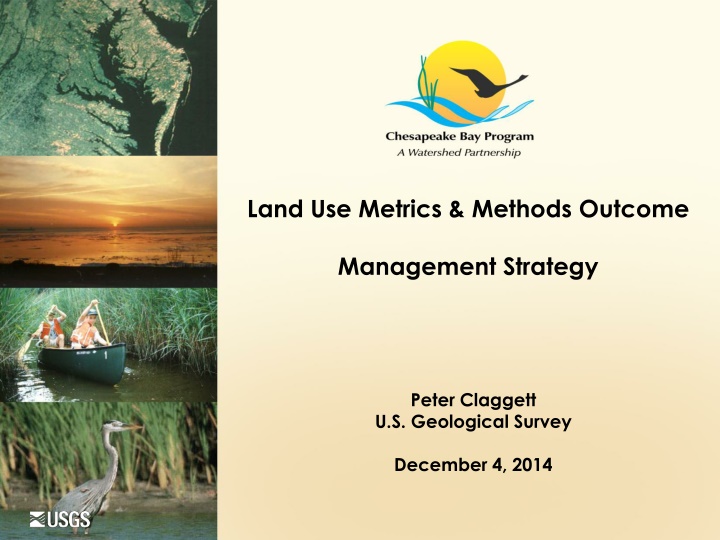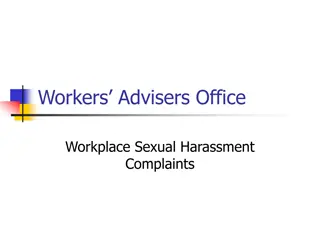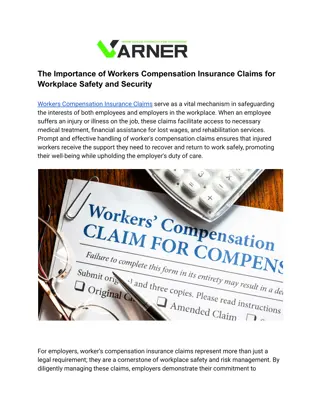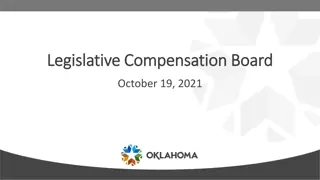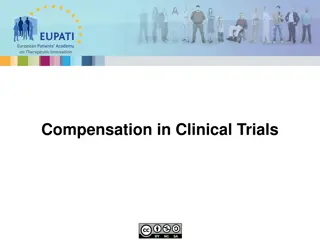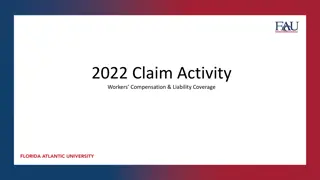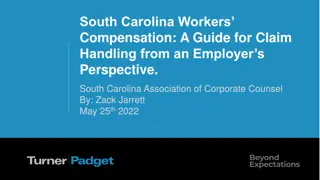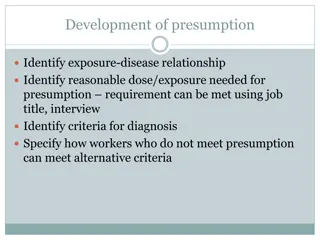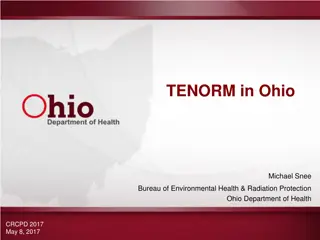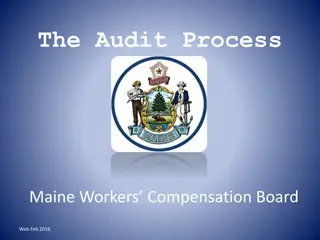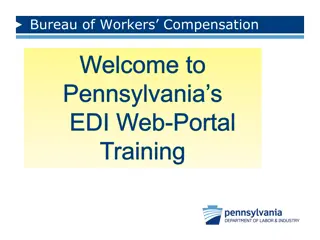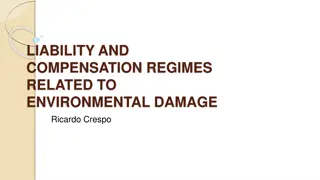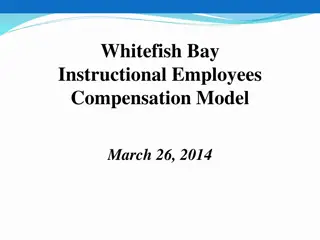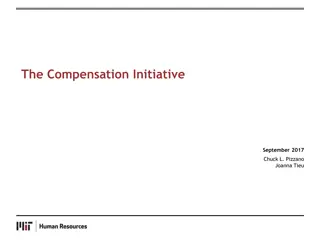Ohio Bureau of Workers Compensation Loss Reserves Process
This document outlines the process followed by the Ohio Bureau of Workers Compensation in managing loss reserves, including the background, operational approaches, reserve governance process, and the use of discount rates for financial reporting. The study is presented annually to the Actuarial Committee, approved, and used in audited financial statements. The Bureau maintains consistency in applying discount rates to all reserves to ensure solvency.
Download Presentation

Please find below an Image/Link to download the presentation.
The content on the website is provided AS IS for your information and personal use only. It may not be sold, licensed, or shared on other websites without obtaining consent from the author.If you encounter any issues during the download, it is possible that the publisher has removed the file from their server.
You are allowed to download the files provided on this website for personal or commercial use, subject to the condition that they are used lawfully. All files are the property of their respective owners.
The content on the website is provided AS IS for your information and personal use only. It may not be sold, licensed, or shared on other websites without obtaining consent from the author.
E N D
Presentation Transcript
Land Use Metrics & Methods Outcome Management Strategy Peter Claggett U.S. Geological Survey December 4, 2014
2014 Bay Agreements Land Conservation Goal: Conserve landscapes treasured by citizens in order to maintain water quality and habitat; sustain working forests, farms and maritime communities; and conserve lands of cultural, indigenous and community value. Land Use Methods & Metrics Development Outcome: Continually improve the knowledge of land conversion and the associated impacts throughout the watershed. By 2016, develop a Chesapeake Bay watershed-wide methodology and local level metrics for characterizing the rate of farmland, forest and wetland conversion, measuring the extent and rate of change in impervious surface coverage and quantifying the potential impacts of land conversion to water quality, healthy watersheds and communities. Launch a public awareness campaign to share this information with citizens, local governments, elected officials and stakeholders.
Elements: 1. Assess rate of conversion of forests, wetlands, and farmland. 2. Monitor changes in impervious surfaces. 3. Quantify impacts of land conversion on: a. Water quality b. Healthy watersheds c. Communities 4. Communicate results to the public, elected officials, and CBP partners.
Technical Issues: 1. What exactly are we monitoring? Loss? Loss & Gain? 2. Spatial scale? (e.g., small watersheds, counties, municipalities) 3. Frequency? (e.g., annual, 2-3 years, 5-7 years) 4. Accuracy? 5. Baseline? (fixed or variable?)
Questions? Which elements are most relevant to local governments? How accurate do the data need to be? Are local governments already tracking land conversions? How should this information be communicated to local governments? In what format? What support is needed to ensure the data are relevant to local government decisions?
